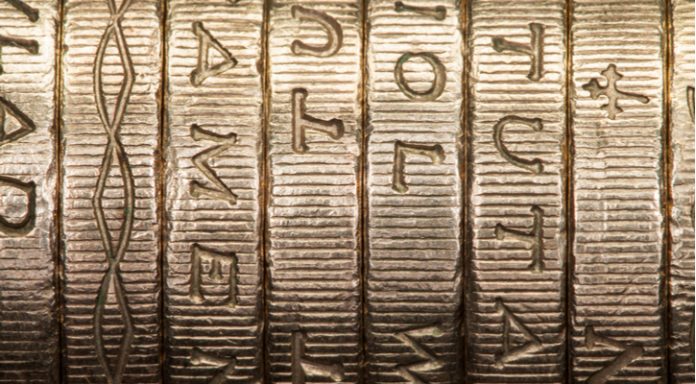The pound was one of the worst performing currencies on Thursday. Sterling tumbled lower versus the dollar amid poor UK retail sales figures, Brexit disappointment. Meanwhile, dollar traders continued digesting the hawkish Fed minutes, which pushed the dollar higher. The pound US dollar exchange rate hit a low of US$1.3016, its lowest level in 2 weeks.
| What do these figures mean? |
|---|
|
When measuring the value of a pair of currencies, one set equals 1 unit and the other shows the current equivalent. As the market moves, the amount will vary from minute to minute. For example, it could be written: 1 GBP = 1.28934 USD Here, £1 is equivalent to approximately $1.29. This specifically measures the pound’s worth against the dollar. If the US dollar amount increases in this pairing, it’s positive for the pound. Or, if you were looking at it the other way around: 1 USD = 0.77786 GBP In this example, $1 is equivalent to approximately £0.78. This measures the US dollar’s worth versus the British pound. If the sterling number gets larger, it’s good news for the dollar. |
After a big spending spree over the summer month, UK consumers tightened their belts in September according to data from the Office of National Statistics. UK retail sales stalled in September, declining -0.8%, in its largest month on month fall since 2005. Whilst analysts had been forecasting a fall in sales, after two very strong months over the summer, the fall exceeded expectations. Rising wages and falling inflation was not able to offer sufficient incentive to consumers to keep spending.
Market participants often consider retail sales to be an indication of future inflation. Lower sales point to lower inflation down the line. The central bank is less likely to raise interest rates in such a lower inflation environment. Therefore, weak retail sales dragged the pound lower.
| Why do raised interest rates boost a currency’s value? |
|---|
| Interest rates are key to understanding exchange rate movements. Those who have large sums of money to invest want the highest return on their investments. Higher interest rate environments tend to offer higher yields. So, if the interest rate or at least the interest rate expectation of a country is relatively higher compared to another, then it attracts more foreign capital investment. Large corporations and investors need local currency to invest. More local currency used then boosts the demand of that currency, pushing the value higher. |
Brexit continues to be a central focus despite UK Prime Minister Theresa May bringing nothing new to the EU Leaders Summit. Theresa May has since confirmed that she is willing to consider extending the Brexit transition period by up to another year. This triggered a backlash from Eurosceptics within her own party making her position look increasingly weak. The pound sunk as political risk increased.
| How does political risk have impact on a currency? |
|---|
| Political risk drags on the confidence of consumers and businesses alike, which means both corporations and regular households are then less inclined to spend money. The drop in spending, in turn, slows the economy. Foreign investors prefer to invest their money in politically stable countries as well as those with strong economies. Signs that a country is politically or economically less stable will result in foreign investors pulling their money out of the country. This means selling out of the local currency, which then increases its supply and, in turn, devalues the money. |
Dollar Powers Higher Versus Pound
The dollar was in demand for a second straight session on Thursday as investors continued to digest the hawkish minutes from the latest Federal Reserve meeting. With all policy members in agreement that the Fed should continue hiking rates, there is little holding the dollar back.
Economic data in the previous session surprised to the upside, showing the US economy to be solid. This threw further weight behind the Fed’s hawkish comments giving investors even more reason to buy into the dollar.
There is no high impacting economic data due for release today, which means that there should be no further fluctuation in the exchange rate.
This publication is provided for general information purposes only and is not intended to cover every aspect of the topics with which it deals. It is not intended to amount to advice on which you should rely. You must obtain professional or specialist advice before taking, or refraining from, any action on the basis of the content in this publication. The information in this publication does not constitute legal, tax or other professional advice from TransferWise Inc., Currency Live or its affiliates. Prior results do not guarantee a similar outcome. We make no representations, warranties or guarantees, whether express or implied, that the content in the publication is accurate, complete or up to date. Consult our risk warning page for more details.
This article was initially published on TransferWise.com from the same author. The content at Currency Live is the sole opinion of the authors and in no way reflects the views of TransferWise Inc.





